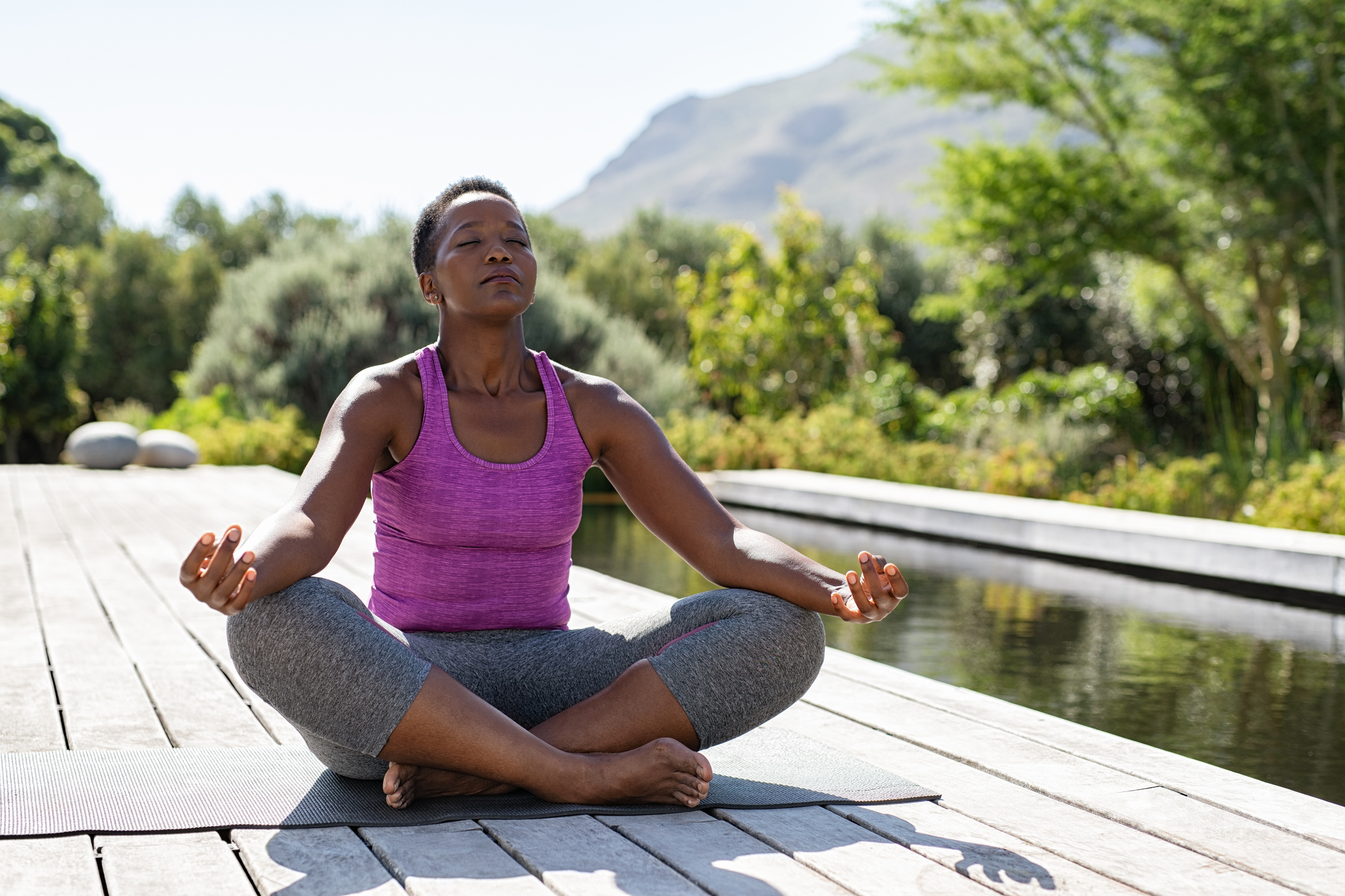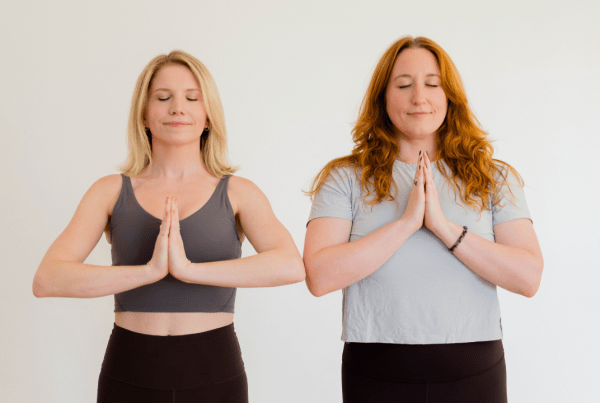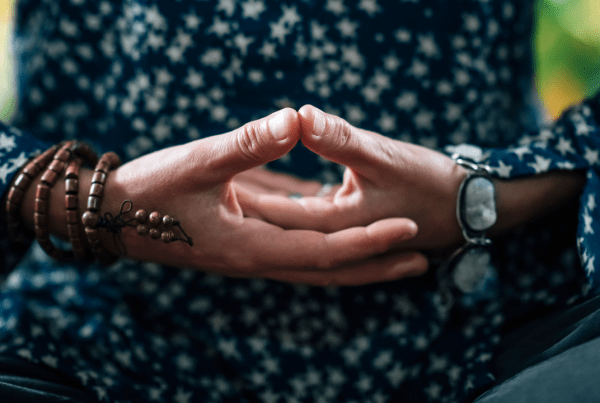
Pranayama is an ancient breath practice, commonly recognized as the fourth limb of yoga. Also utilized in the yoga practice, pranayama has more widely been known to reduce stress, ease anxiety and help alleviate other ailments as well as support healthy lung function.
When we break apart the word pranayama, we find that:
Prana = life force energy
Ayama = expansion, extension, or control
Pranayama = Expansion, extension or control of the life force energy.
There are also various types of pranayama. Some of the types of breath practices include:
- Nadi Shodhana — Alternate Nostril Breathing
- Bastrika — Bellow Breath
- Ujjayi — Oceanic Breath
- Dirgha — Three Part Breath
- Bhramari — Bee Breath
While breathwork is an ancient yogic practice originating in India, it has migrated to the Western world and been popularized as a sound healing method. It is also frequently incorporated with the yoga practice here and many yoga teachers incorporate several breathing techniques into their yoga and meditation practices.
Practicing Pranayama
As stated above, there are several different styles of the ancient breathing practice that can be used to bring certain benefits to the mind and body. In this section, we’ll review some of the most popular pranayama techniques and how to practice them.
3 Pranayama Breath Practices for Beginners
1. Alternate Nose Breathing (Nadi Shodhana)
Alternate nose breathing brings balance to the nervous system. In Sanskrit, Nadi means channel and Shodhana means purification; translating to the purification of both channels of the nervous system. These two channels are the parasympathetic (the place where we tap into relaxation) and the sympathetic (our “fight or flight” response). The left side of the body is representative of the parasympathetic and the right side of the body is representative of the sympathetic. Breathing through both channels brings balance and harmony to our nervous system.
How to practice Alternate Nostril Breathing:
- Sit in a comfortable seated position. If you’re practicing yoga, this can look like Sukhasana (legs crossed), Virasana (kneeling), or Padmasana (legs cross and lifted onto the opposite thighs).
- Use your right hand ring finger over your left nostril and your right thumb to place over your right nostril (with your pointer and middle finger folded into your palm).
- Close your right nostril with your thumb and inhale through your left nostril for 5 counts.
- Close the left nostril with your ring finger and exhale through the right nostril for 5 counts.
- Alternate between the sides, still using a 5 count.
- Increase the retention once you find the breathing becomes easier (by increasing the counts).
2. Three Part Breath (Dirgha)
This breathing practice is deeply calming and quieting for the mind. It also works to relax the nervous system to bring you into a state of full relaxation. Three part breath is typically practiced lying down, which makes it suitable for beginners and easier to tune inward and focus on the breath. This is also a great breathing exercise to do on a consistent basis, with the body in an easy position to begin to relax.
How to practice Three Part Breath:
- Find a comfortable position lying down, preferably with the use of props such as: a yoga blanket and a bolster.
- Lie down with your palms facing the ceiling, collarbone spread, and head also facing the ceiling.
- Let your eyes close, breathe in and out through your nose with your natural rhythm of breath.
- Breathe in halfway, emptying all the air from your body.
- Breathe in through your nose, just into your abdomen. Pause.
- Breathe in through your nose, into your side ribs. Pause.
- Breathe in through your nose, into your collarbone. Pause.
- Take a long exhalation out through your nose, relaxing your abdomen, followed by a few regular cycles of breath.
3. Victorious Breath (Ujjayi)
This breathing technique is purely to bring a strong sense of relaxation to the body. Victorious breath is namely incorporated into the Ashtanga yoga practice. In Ashtanga, each movement is tied to a cycle of breath. When others hear someone engaging in Ujjayi breath, it is usually a gentle reminder to keep breathing, as it signals others in the class to focus on their breathing. In Sanskrit, Ujjayi loosely translates to “victorious” or “one who is victorious.” Ujjayi engages the diaphragm and the pelvic floor, making it a full body breath.
How to practice Victorious Breath:
- Sit in a comfortable seat.
- Take a few normal breaths, in and out, focusing your mind purely on the breath.
- Inhale through your nose and exhale through your nose for 4 counts.
- Repeat this a couple times.
- Take a slow, deep steady breath through the nose, making the sound of “sa” internally.
- Fill up to the top and pause.
- Exhale through the nose, slowly deeply and steadily with the sound of, “ha,” until you’re completely empty of air.
Why do breathing exercises help with stress and anxiety?
When we focus on our breathing, we are tapping into our body’s relaxation response. By focusing on the breath and controlling it in a way, we are signaling the nervous system to slow down. With deeper intention placed on the inhalation and exhalation of oxygen in the body, our brain notices we are trying to enter a more calm state. When the breath is slower and longer, the body and brain adapt to this steady flow of oxygen. Usually in states of high anxiety or stress, the breath is short and rapid, in turn increasing our heart rate and oftentimes signaling a “fight, flight or freeze” response. When trying to alleviate that tension, we should initially focus on the breath. Using breathing exercises to reduce stress and anxiety has not only been known to help the body enter a more relaxed state, but it can also help nurture the muscles, enhance respiratory wellness, lower pain levels, and increase overall brain function.
Breathing techniques are an ancient practice that have stood the test of time for many reasons, namely the fact that it is the function we are inherently born with, doing it both subconsciously and consciously (able to be controlled or trained). Since breathing is such a vital function of the human body in order to exist, paying attention to it and nurturing it can provide longterm health benefits that can outweigh most other mechanisms.
How can I learn more about Pranayama?
In YogaRenew’s 200 Hour Yoga Teacher Training program, the basic fundamental of pranayama is introduced. Moving onto the 300 Hour course allows you to dive deeper into applying pranayama to the practice of yoga. Whether you’re a beginning practitioner, or an experienced yogi, our online courses provide you with information you may not have heard before and is broken down in a digestible way.







